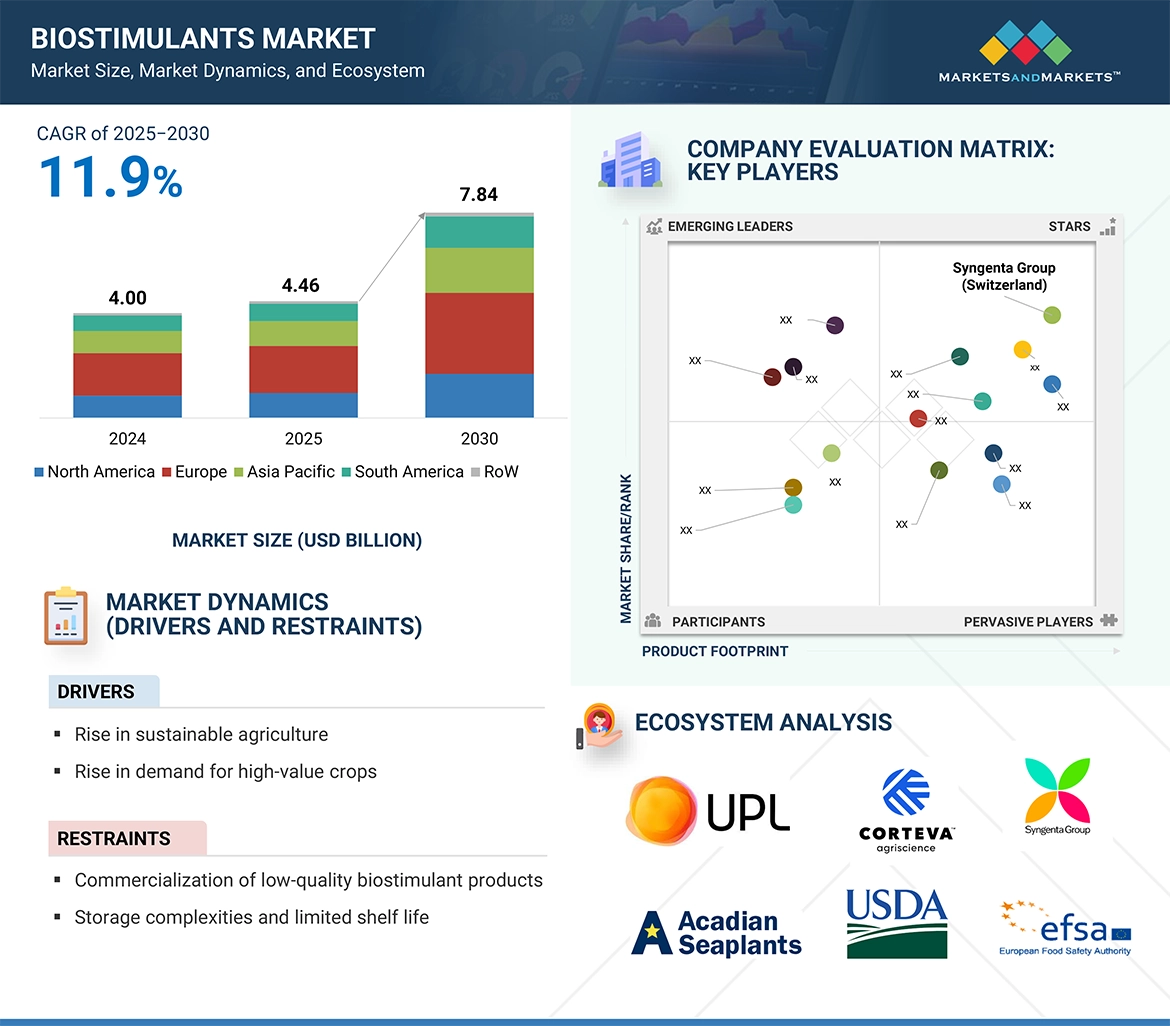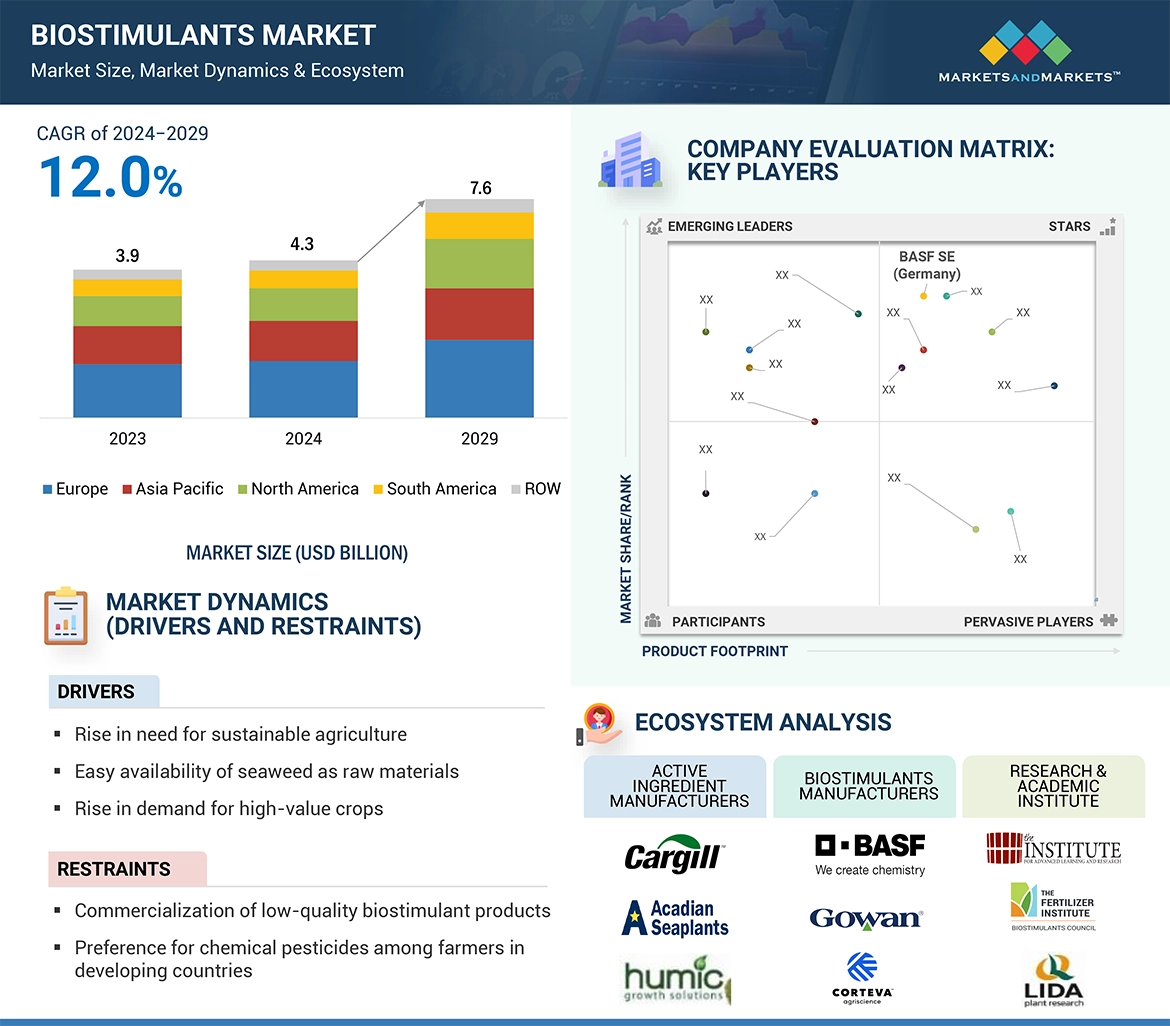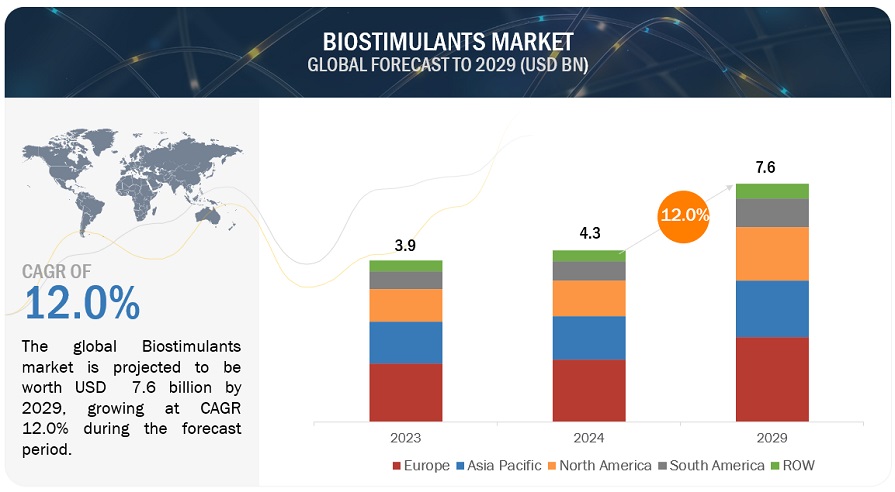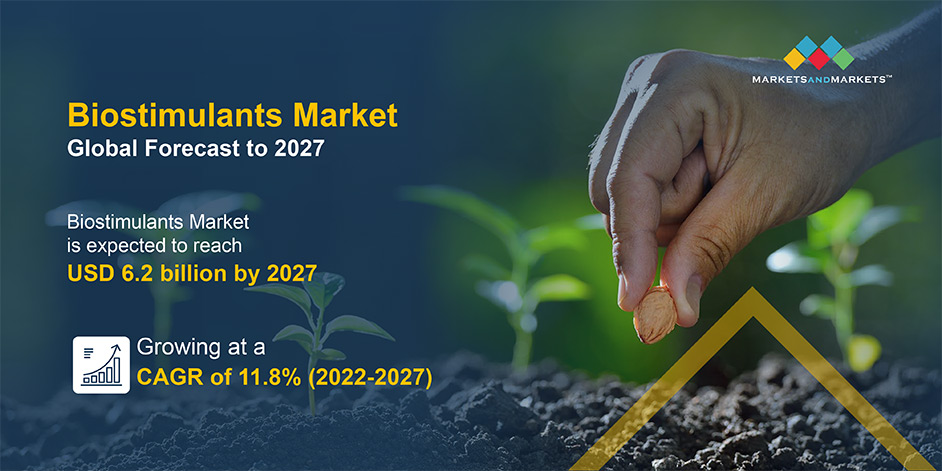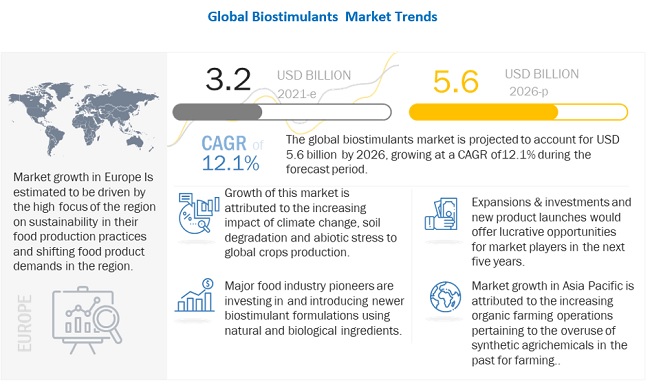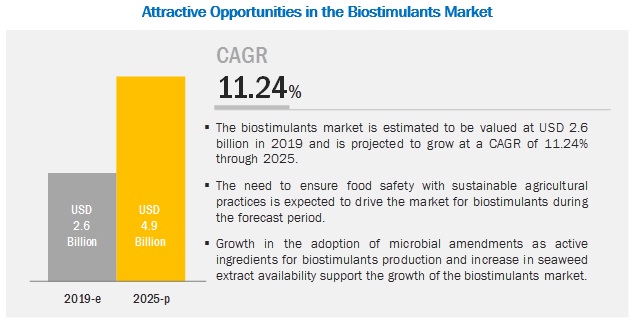The global biostimulants market is projected to grow from USD 4.46 billion in 2025 to USD 7.84 billion by 2030, reflecting a CAGR of 11.9% during the forecast period. This robust growth is primarily fueled by the rising adoption of sustainable agricultural practices, the expanding use of organic farming, and heightened awareness about the benefits of biostimulants in enhancing crop yield, quality, and resilience to abiotic stress.
Supportive government
initiatives—such as the European Union’s Farm to Fork strategy—are further
accelerating market growth by promoting eco-friendly farming techniques. In
parallel, advancements in biostimulant formulation and extraction technologies
are improving product effectiveness and expanding their applicability across
diverse crop types. Farmers are increasingly turning to biostimulants to boost
nutrient efficiency, enhance soil health, and reduce dependency on chemical
fertilizers. In addition, rising consumer demand for high-quality, residue-free
produce is encouraging growers to incorporate biostimulants
as part of their organic and sustainable farming toolkit.
By Active Ingredient: Amino
Acids Lead the Market
The amino acids segment
dominates the active ingredient category, owing to its critical role in
supporting plant growth, enhancing nutrient uptake, and improving stress
tolerance. Amino acids act as precursors to essential plant hormones, enzymes,
and proteins that drive key physiological functions such as photosynthesis,
nutrient assimilation, and root development. Their proven effectiveness in
aiding plant recovery from abiotic stresses like drought, temperature
fluctuations, and salinity makes them a preferred choice for farmers aiming to
boost productivity and resilience.
One key player in this space
is Aminocore (Germany), known for its natural amino acid-based fertilizers and
biostimulants. Developed through mild enzymatic hydrolysis—a
pharmaceutical-grade process—Aminocore’s products offer a superior free amino
acid profile that is twice as effective as conventional solutions, without
relying on synthetic components or toxic additives.
By Form: Liquid
Biostimulants Dominate
In terms of form, the liquid
biostimulants segment holds the largest market share, largely due to its ease
of application, rapid absorption, and high efficacy in promoting plant growth
and resistance to environmental stressors. Farmers widely favor liquid
formulations as they are compatible with various application methods—including
foliar sprays, fertigation, and soil drenching—ensuring uniform distribution
and quick uptake by plants. Additionally, liquid biostimulants demonstrate
strong compatibility with other agrochemicals and fertilizers, further
enhancing nutrient absorption and crop response.
North America dominates the Biostimulants
Market Share.
North America represents a
substantial share of the global biostimulants market, underpinned by
large-scale commercial farming, advanced agricultural technologies, and a
strong focus on soil health and crop productivity. The United States and Canada
lead the region with high-volume production of staple crops such as wheat,
corn, and soybeans, which require consistent and efficient nutrient input.
Government support for
organic and sustainable farming methods, coupled with growing awareness about
the soil-enhancing and yield-boosting benefits of biostimulants, is further
strengthening the market. Additionally, regional players are heavily investing
in R&D to create next-generation biostimulant products with enhanced
performance and wider crop applicability.
Leading Biostimulants
Companies:
The report profiles key players
such as UPL (India), FMC Corporation (US), Corteva (US), Syngenta Group
(Switzerland), Sumitomo Chemical Co., Ltd. (Japan), Nufarm (Australia),
Novonesis Group (Denmark), BASF SE (Germany), Bayer AG (Germany), PI Industries
(India), T. Stanes and Company Limited (India), Gowan Company (US), J.M. Huber
Corporation (US), Haifa Negev Technologies LTD (Israel), and Koppert
(Netherlands).
